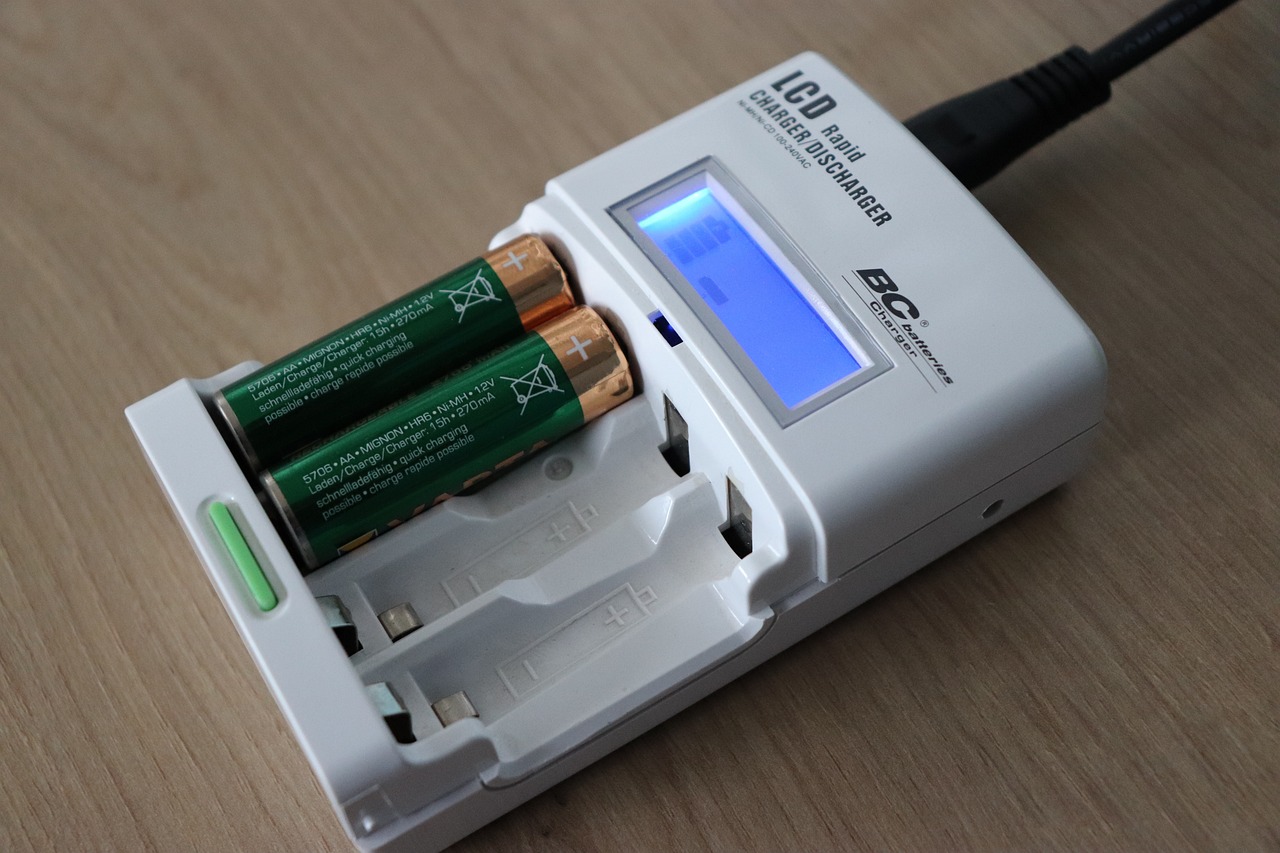This article provides a step-by-step guide on changing the battery in your Honda Accord key fob, ensuring you can access your vehicle without hassle. Maintaining your key fob is essential for convenience and security, and knowing how to replace the battery can save you from unexpected lockouts.
Understanding the necessity of changing your key fob battery can help prevent unexpected lockouts and ensure your vehicle’s access system functions properly. A functional key fob provides peace of mind, especially in emergencies.
Identifying the correct battery type is crucial for a successful replacement. Most Honda Accord key fobs use a CR2032 lithium battery, known for its reliability and long-lasting performance. Always check your owner’s manual for specific battery requirements.
Recognizing the symptoms of a failing key fob battery can save you time and frustration. Common signs include:
- Reduced range: You have to be closer to your vehicle to unlock it.
- Intermittent functionality: The fob works sometimes, but not always.
- Warning lights: Dashboard alerts may indicate a key fob issue.
Before starting, gather the necessary tools. Typically, you will need:
- A small flathead screwdriver
- A new CR2032 battery
Opening your key fob correctly is essential to avoid damage. Follow these steps to safely access the battery compartment without breaking your fob:
Identifying the seam is the first step in opening your key fob. This is where you will insert your screwdriver to pry it open gently.
Carefully inserting the screwdriver into the seam allows you to pop open the fob without causing any damage to the casing or internal components. Take your time to avoid cracking the plastic.
Once the fob is open, replacing the battery is straightforward. Follow these instructions:
Gently take out the old battery, taking care not to damage any internal components. Proper handling ensures the longevity of your key fob.
Make sure to position the new battery with the correct polarity. The positive side should face up, as indicated inside the fob. Incorrect placement can lead to further issues and may prevent the fob from working.
After replacing the battery, reassembling your key fob is the final step. Follow these guidelines:
Proper alignment of the fob halves is crucial for a snug fit. Ensure that all clips and grooves are aligned before pressing them together.
Applying even pressure around the edges will ensure the fob snaps back into place securely, restoring its original functionality.
After reassembling, it’s important to test your key fob to confirm that the new battery is functioning properly. Here’s how:
Testing both the lock and unlock functions will verify that the battery replacement was successful and that the fob is fully operational. Stand a few feet away to ensure it works from a distance.
If your key fob includes additional features like remote start or panic, ensure these functions are also working to confirm the battery change was effective. This ensures that all aspects of your vehicle’s security are intact.

Why Do You Need to Change Your Key Fob Battery?
When it comes to modern vehicles, key fobs play a crucial role in convenience and security. However, many drivers overlook the importance of maintaining their key fob batteries. Understanding the necessity of changing your key fob battery can help prevent unexpected lockouts and ensure your vehicle’s access system functions properly.
Key fobs are designed to provide easy access to your vehicle, but they rely on a small battery to operate. Over time, the battery will deplete, leading to various issues. Regularly checking and replacing your key fob battery can save you from frustrating situations where your vehicle won’t respond to your commands.
Why is it essential to change your key fob battery? The primary reason is to maintain functionality. A dead battery can render your key fob useless, leaving you stranded or unable to access your car. This situation is particularly inconvenient when you’re in a hurry or parked in a remote location. By replacing the battery proactively, you can avoid these scenarios and ensure seamless access to your vehicle.
Moreover, a functional key fob enhances your vehicle’s security system. Many modern cars come equipped with advanced locking mechanisms that rely on the key fob for activation. If the battery is low or dead, you may inadvertently compromise your vehicle’s security, making it more susceptible to theft.
Recognizing the signs of a dying key fob battery is equally important. Common indicators include:
- Reduced Range: If you find yourself having to stand closer to your vehicle for the key fob to work, it might be time for a battery replacement.
- Intermittent Functionality: If the key fob works sporadically, it can be a sign that the battery is on its last legs.
- Warning Lights: Some vehicles will display warning lights on the dashboard indicating a problem with the key fob.
In addition to avoiding lockouts, changing your key fob battery can also ensure that all features of the fob operate as intended. Many key fobs come equipped with additional functionalities such as remote start, trunk release, and panic buttons. A weak battery can hinder these features, leading to a less efficient experience.
Another factor to consider is the cost-effectiveness of changing your key fob battery. A replacement battery is relatively inexpensive compared to the potential costs associated with a lockout situation or having to replace the entire key fob. By taking a few minutes to change the battery, you can save both time and money in the long run.
In conclusion, understanding the importance of changing your key fob battery is essential for maintaining the convenience and security of your vehicle. By being proactive and recognizing the signs of a dying battery, you can avoid unexpected lockouts and ensure that your key fob operates smoothly. Remember, a small investment in a new battery can lead to significant benefits in terms of accessibility and peace of mind.

What Type of Battery Does a Honda Accord Key Fob Use?
When it comes to maintaining your Honda Accord’s key fob, understanding the type of battery it requires is essential. The key fob is not just a convenience; it is integral to your vehicle’s security and functionality. Therefore, knowing the correct battery type ensures that you can replace it without any hassle and maintain seamless access to your vehicle.
Most Honda Accord key fobs utilize a CR2032 lithium battery. This specific battery type is widely recognized for its reliability and longevity, making it a popular choice for various electronic devices, including automotive key fobs. The CR2032 battery is a coin-cell battery, typically measuring 20mm in diameter and 3.2mm in thickness, which is why it fits perfectly in the compact design of key fobs.
Using the correct battery type is crucial for a successful replacement. If you mistakenly install the wrong battery, it could lead to malfunctioning of your key fob or even damage to the internal components. Therefore, always ensure that you are purchasing a genuine CR2032 battery from a reputable source.
The choice of a CR2032 battery for your Honda Accord key fob is not arbitrary. These batteries offer several advantages:
- Longevity: CR2032 batteries can last up to three years or more, depending on usage.
- Availability: They are widely available in stores and online, making replacements convenient.
- Cost-Effectiveness: These batteries are relatively inexpensive, providing a budget-friendly option for key fob maintenance.
To ensure you are purchasing the correct battery, follow these steps:
- Check the User Manual: Your Honda Accord’s owner manual will specify the required battery type.
- Inspect the Old Battery: If you have the old battery, check for markings that indicate it is a CR2032.
- Consult Online Resources: Many automotive forums and websites provide detailed information about key fob batteries.
Being aware of the signs that your key fob battery is running low can save you from unexpected lockouts. Common indicators include:
- Reduced Range: You may find that you need to be closer to your vehicle for the key fob to work.
- Intermittent Functionality: The key fob may work sporadically, failing to lock or unlock the doors on occasion.
- Warning Lights: Some vehicles will display a warning light on the dashboard indicating a key fob issue.
In conclusion, identifying the correct battery type for your Honda Accord key fob is vital for ensuring its functionality. The CR2032 lithium battery is the standard choice, known for its reliability and ease of replacement. By understanding the signs of a dying battery and how to confirm you have the correct type, you can maintain your key fob effectively and avoid any potential inconveniences.
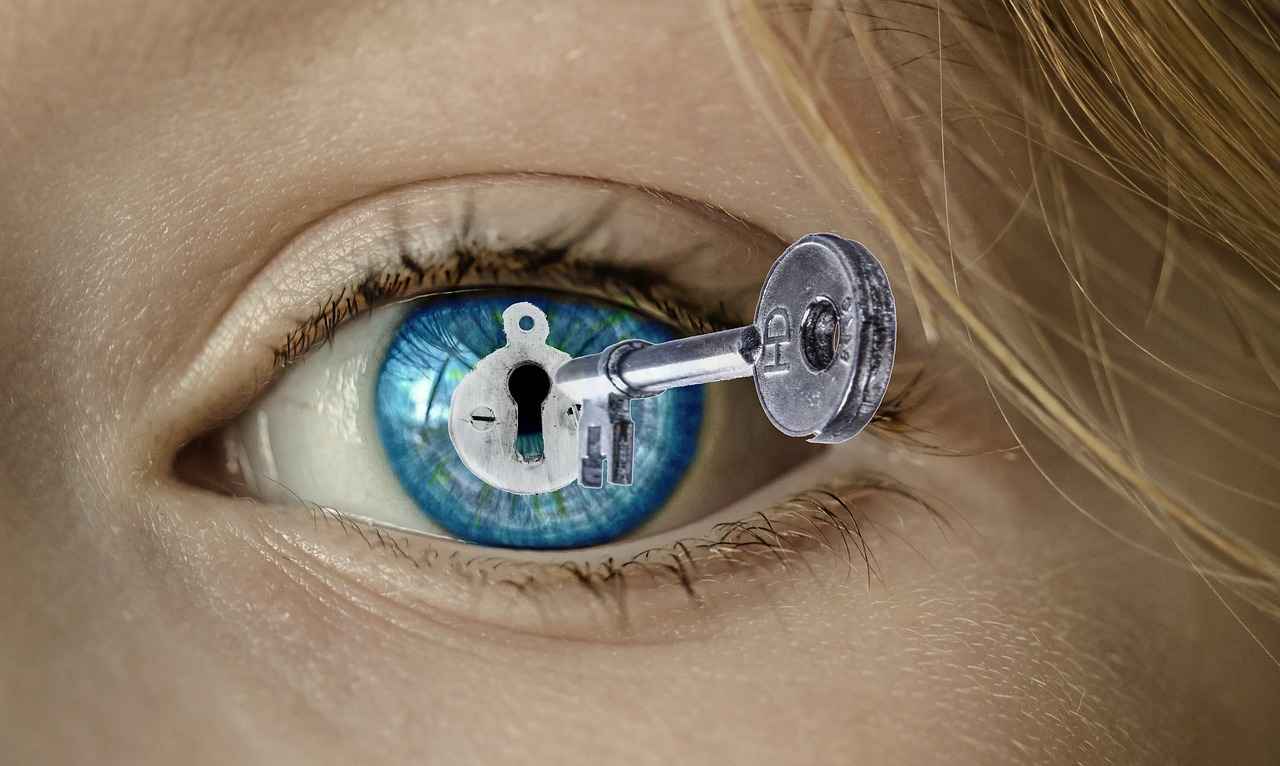
How to Identify Signs of a Dying Key Fob Battery?
Understanding how to identify the signs of a deteriorating key fob battery is essential for any vehicle owner. A key fob is a critical component of modern car access systems, and being aware of its operational status can save you from unexpected inconveniences. Below, we explore the symptoms indicating that your key fob battery may need replacement, ensuring you can maintain seamless access to your vehicle.
- Reduced Range: One of the first signs of a failing key fob battery is a noticeable decrease in the effective range. If you find yourself having to stand closer to your car to unlock or start it, this may indicate that the battery is losing its charge.
- Intermittent Functionality: If your key fob occasionally works and sometimes does not, this inconsistency can be a telltale sign of a dying battery. You might experience moments where the lock or unlock functions fail to respond, which can be frustrating.
- Delayed Response: Another symptom to watch for is a delay in the fob’s response time. If you press a button and there’s a noticeable lag before the car reacts, it’s likely time to replace the battery.
- Warning Light: Some vehicles are equipped with dashboard indicators that alert you when the key fob battery is low. If you see a warning light or message, it’s crucial to address the issue promptly.
- Battery Life: Key fob batteries typically last between 2 to 4 years. If you know it’s been a while since you last replaced the battery, it’s wise to do so preemptively.
Recognizing these symptoms early can prevent unexpected lockouts and ensure your vehicle’s access system functions properly. Ignoring these signs may lead to situations where you are unable to access your car, causing unnecessary delays and frustration.
If you observe any of the above signs, it’s advisable to replace the battery as soon as possible. This simple maintenance task can save you time and hassle in the long run. Follow the necessary steps to change the battery in your key fob, ensuring you have a reliable means of accessing your vehicle.
Before jumping to conclusions, you can perform a few tests to confirm whether your key fob battery is indeed failing:
- Check the Battery Voltage: Use a multimeter to check the voltage of the key fob battery. A healthy battery should read around 3 volts.
- Inspect for Physical Damage: Look for any signs of wear and tear on the key fob itself. Sometimes, the issue may not be the battery but rather the fob’s internal components.
- Try a Spare Key Fob: If you have a spare key fob, test it to see if it works properly. If it does, it confirms that the original fob’s battery is likely the issue.
By being vigilant and recognizing the symptoms of a dying key fob battery, you can ensure that your vehicle remains accessible at all times. Regular maintenance and prompt action can go a long way in avoiding unnecessary complications.
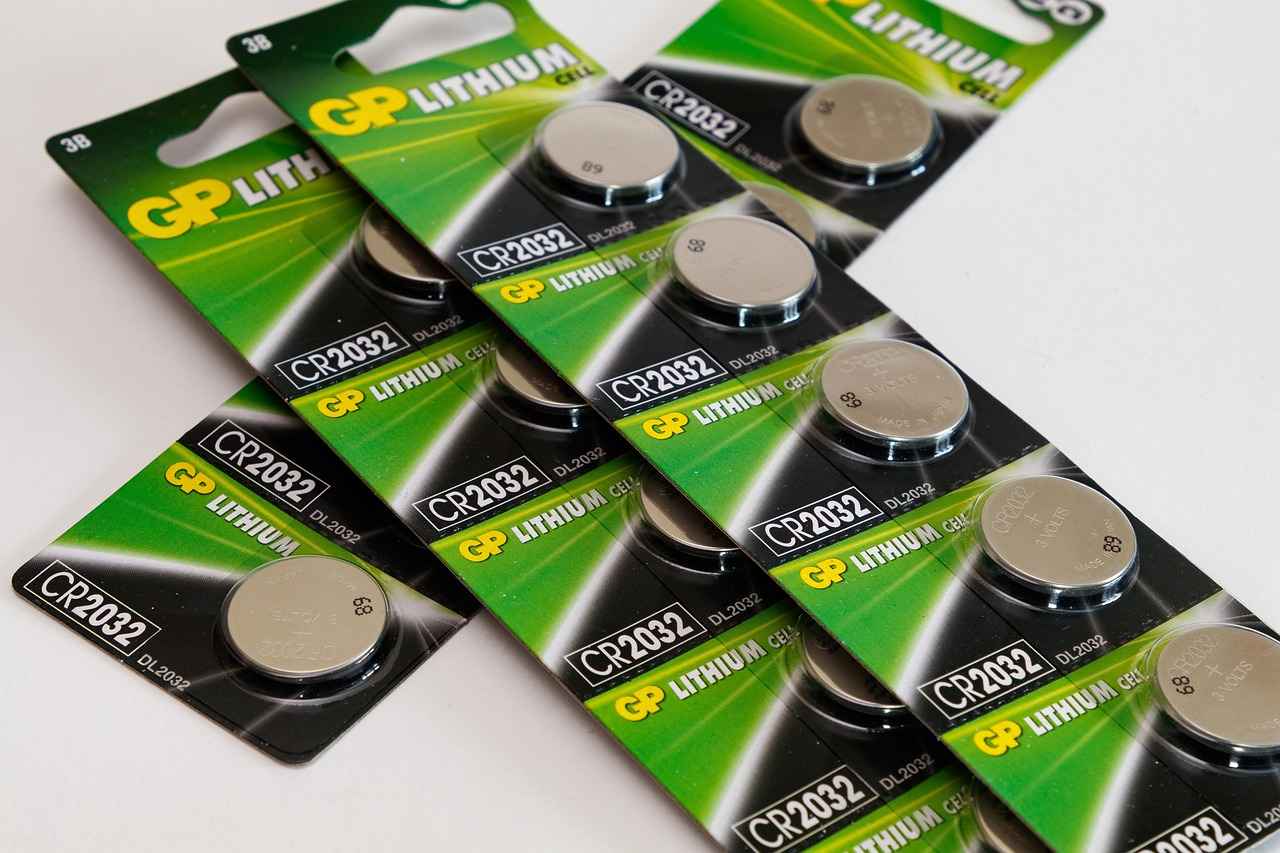
Tools Required for Changing Your Key Fob Battery
Changing the battery in your Honda Accord key fob is a straightforward task, but it does require some essential tools to ensure the process goes smoothly. Understanding what you need before you begin can save you time and prevent any unnecessary frustration. Below is a detailed overview of the tools required for changing your key fob battery.
Before starting the battery replacement process, it is crucial to gather the following tools:
- Small Flathead Screwdriver: This tool is essential for prying open the key fob casing. A small flathead screwdriver is preferred because it provides the precision needed to avoid damaging the fob.
- New Battery: Typically, Honda Accord key fobs require a CR2032 lithium battery. Ensure you purchase a high-quality battery to guarantee optimal performance.
- Soft Cloth or Surface: Having a soft cloth or a clean surface to work on can help prevent scratches on your key fob. It also provides a stable area to keep your tools organized.
- Plastic Pry Tool (Optional): If you have one, a plastic pry tool can be a safer alternative to a screwdriver, minimizing the risk of scratching or damaging your key fob.
Using the correct tools is vital for a few reasons:
- Prevent Damage: Using a tool that is too large or not designed for the task can lead to scratches or breaks in the fob casing, potentially rendering it unusable.
- Efficiency: Having the right tools on hand allows you to complete the task quickly and efficiently, reducing the likelihood of frustration during the process.
- Safety: Using tools designed for this type of work can help avoid accidents, such as slipping and injuring yourself or damaging the key fob.
Before diving into the battery replacement process, take a moment to gather all the necessary tools. This preparation step is crucial for ensuring you have everything you need at your fingertips, allowing for a smooth and efficient replacement.
Once you have your small flathead screwdriver and a new CR2032 lithium battery ready, you can proceed with confidence, knowing that you are equipped to handle the task. Remember, preparation is key to a hassle-free experience.
In summary, the tools required for changing your Honda Accord key fob battery include a small flathead screwdriver, a new battery, and optionally, a plastic pry tool. By assembling these tools beforehand, you can ensure a smooth and efficient battery replacement process.

Step-by-Step Guide to Open Your Honda Accord Key Fob
Changing the battery in your Honda Accord key fob is a straightforward process, but it’s crucial to open the fob correctly to avoid any damage. In this step-by-step guide, we will walk you through the essential steps to safely access the battery compartment.
Opening your key fob without the right technique can lead to irreparable damage to the casing or internal components. By following the correct steps, you can ensure that your fob remains functional and intact.
- Small Flathead Screwdriver: This is essential for prying open the fob.
- New Battery: Ensure you have the correct type, typically a CR2032 lithium battery.
The first step is to identify the seam on your key fob. This is usually a small groove that runs along the edge of the fob. It’s important to find this seam as it’s where you will insert your screwdriver.
Once you’ve located the seam, take your small flathead screwdriver and carefully insert it into the seam. Be gentle to avoid damaging the plastic casing. You want to pry it open just enough to create a gap without forcing it.
With the screwdriver in place, gently twist the handle to pop open the fob. You should hear a slight click as the two halves separate. If you encounter resistance, double-check the seam to ensure you are applying pressure in the right area.
After successfully prying open the fob, carefully remove the cover. Place it aside, ensuring you don’t lose any small parts that may be attached. This is crucial for the reassembly process.
Once you have opened the fob, you can proceed with replacing the battery. Handle the internal components with care to avoid any damage. Make sure to take note of how the old battery is positioned, as this will guide you when inserting the new battery.
- Using Excessive Force: Applying too much pressure can crack the fob.
- Ignoring the Seam: Not locating the seam can lead to unnecessary damage.
- Forgetting to Keep Track of Parts: Always keep small components organized to avoid losing them.
By following these steps carefully, you can open your Honda Accord key fob without causing any harm. Remember, taking your time and being gentle is key to a successful battery replacement.
Locate the Seam on Your Key Fob
When it comes to changing the battery in your Honda Accord key fob, the first crucial step is to locate the seam on your key fob. This seam is essential for accessing the internal components without causing any damage. Many users overlook this detail, but understanding how to identify the seam can significantly simplify the battery replacement process.
The seam is typically a thin line that runs along the edge of the key fob, where the two halves of the casing meet. It may not be immediately obvious, especially if the fob has a sleek design. To make this step easier, hold the key fob in your hand and inspect it closely. Look for any slight indentation or change in texture, as this often indicates the seam’s location.
Once you have identified the seam, the next step involves using a small flathead screwdriver to pry open the fob. This tool is ideal for gently inserting into the seam without risking damage to the casing. It’s important to be cautious during this step; applying too much force can crack the plastic or dislodge internal components.
To begin, insert the flathead screwdriver into the seam at one end. Apply gentle pressure while twisting the screwdriver slightly to create a small gap. This action will help you pop open the fob without needing to use excessive force. If you encounter resistance, take a moment to reassess the seam’s location and ensure that you are not forcing the screwdriver into an inappropriate area.
Once you have successfully created a gap, continue to work the screwdriver around the seam, gradually prying the two halves apart. It may take a few moments, but patience is key. Rushing through this process could lead to breaking the fob or damaging the internal components. As you pry open the fob, listen for a soft click that indicates the casing is beginning to separate.
After you have opened the key fob, you will gain access to the battery compartment. At this point, you can proceed to remove the old battery and replace it with a new one. Remember to handle the internal components with care to ensure the longevity of your key fob.
In summary, locating the seam on your key fob is the first and vital step in the battery replacement process. By following these instructions and using the right tools, you can efficiently and safely open your key fob, paving the way for a successful battery change.
Use a Flathead Screwdriver to Pry Open the Fob
When it comes to changing the battery in your Honda Accord key fob, the process can seem daunting at first. However, with the right approach and tools, you can easily manage this task at home. One crucial step in this process is to carefully open the fob without causing any damage to its casing or internal components. This is where the use of a flathead screwdriver becomes essential.
Opening your key fob correctly is vital to ensure that you do not damage the delicate internal mechanisms. A poorly executed opening can lead to irreparable damage, making it impossible to use your key fob even after replacing the battery. Thus, taking your time and following the right techniques is crucial.
To safely pry open your Honda Accord key fob, follow these detailed steps:
- Locate the Seam: Identify the seam where the two halves of the fob meet. This is typically found along the edges and is the best point to insert your screwdriver.
- Choose the Right Screwdriver: Use a small flathead screwdriver. A larger screwdriver may apply too much pressure and risk damaging the fob.
- Insert the Screwdriver Gently: Carefully insert the screwdriver into the seam. Make sure to apply minimal pressure to avoid breaking the plastic casing.
- Twist to Pry Open: Once the screwdriver is in place, gently twist the handle. This action should create a small gap between the two halves of the fob. Be patient and avoid forcing it open.
- Work Your Way Around: If the fob does not open easily, move the screwdriver along the seam, gently prying as you go. This will help to gradually loosen the fob without causing damage.
While opening your key fob, there are several common mistakes to be aware of:
- Using Excessive Force: Applying too much pressure can crack the casing and damage internal components.
- Forgetting to Check for Screws: Some fobs may have screws that need to be removed before you can open them.
- Ignoring the Proper Angle: Inserting the screwdriver at the wrong angle can lead to slipping and potential injury.
If you find that the fob is not opening easily, it’s essential to stop and reassess your approach. Check for any hidden screws or clips that may need to be released. Additionally, ensure that you are using the correct seam and that the screwdriver is inserted properly.
Successfully opening your Honda Accord key fob with a flathead screwdriver requires patience and care. By following the outlined steps and avoiding common mistakes, you can ensure that you access the battery compartment without damaging your fob. This not only saves you time and money but also empowers you to take control of your vehicle’s access system.
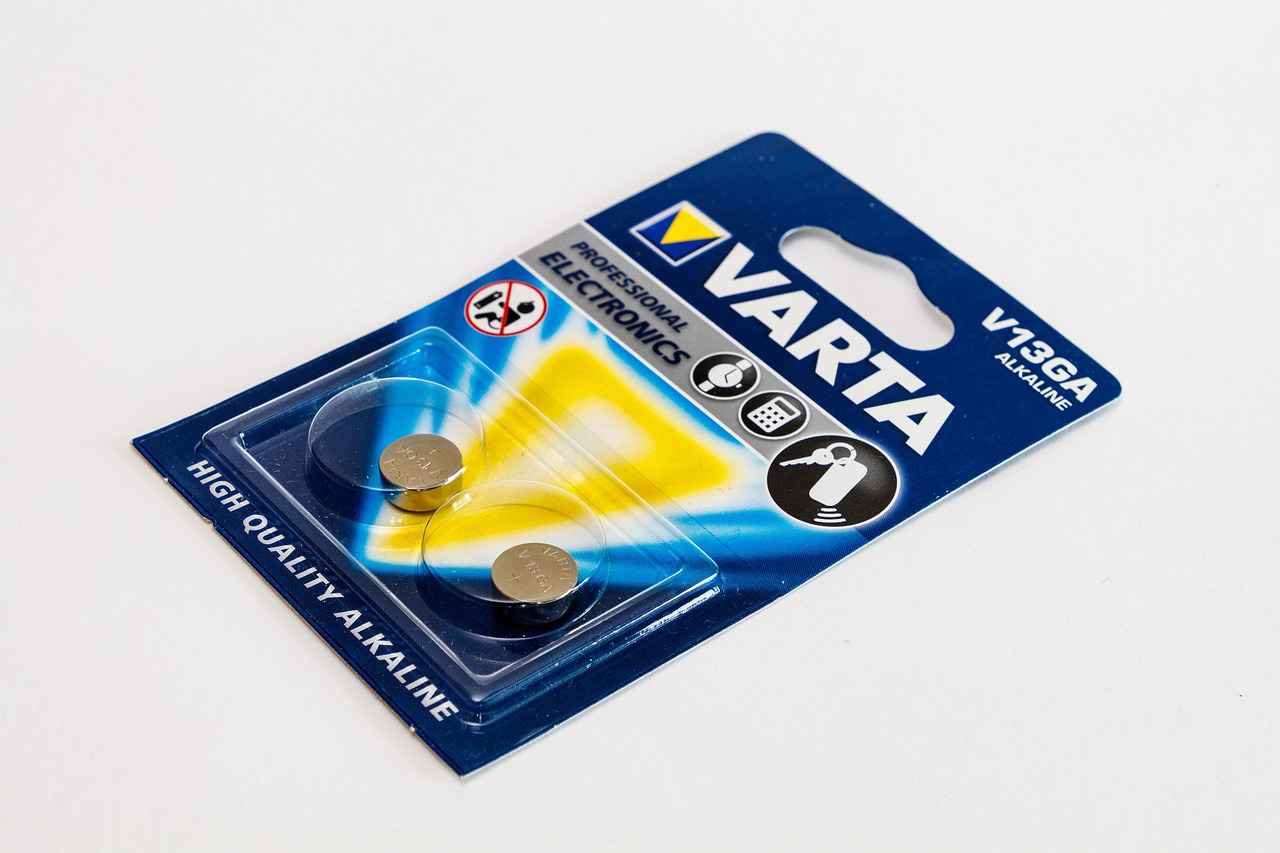
Replacing the Battery in Your Key Fob
When it comes to maintaining your Honda Accord, one essential task is . This process is not only straightforward but also critical for ensuring that your vehicle’s access system functions smoothly. Below, you will find a detailed guide that outlines the steps necessary for a successful battery replacement.
Understanding the importance of changing your key fob battery can save you from unexpected lockouts. A fresh battery ensures that your key fob operates efficiently, allowing you to lock, unlock, and start your vehicle without any issues.
Before you start the replacement process, it’s crucial to identify the correct battery type. Most Honda Accord key fobs utilize a CR2032 lithium battery, which is known for its reliability and long life. Always check your owner’s manual or the existing battery for confirmation.
Recognizing the signs of a failing battery can prevent future inconveniences. Common indicators include:
- Reduced range when trying to unlock or start your vehicle
- Intermittent functionality, where the fob works sporadically
- Warning lights on your dashboard indicating a key fob issue
Before you begin, gather the necessary tools:
- A small flathead screwdriver
- A new CR2032 battery
Opening your key fob correctly is essential to avoid damage. Follow these steps:
The first step is to identify the seam of the key fob. This is where you will insert your screwdriver to gently pry it open.
Carefully insert the screwdriver into the seam and twist gently to pop open the fob. Take your time to avoid damaging the casing or internal components.
Once the fob is open, replacing the battery is straightforward. Follow these instructions to ensure proper placement and functionality:
Gently take out the old battery, being cautious not to damage any internal components. Proper handling ensures the longevity of your key fob.
When inserting the new battery, ensure that it is positioned with the correct polarity. The positive side should face up, as incorrect placement can lead to further issues and may prevent the fob from working.
After replacing the battery, reassembling your key fob is the final step. Follow these guidelines:
Make sure that the two halves of the fob are aligned properly. This is crucial for a snug fit. Check that all clips and grooves are aligned before pressing them together.
Apply even pressure around the edges to ensure the fob snaps back into place securely. This will restore its original functionality.
Once you have reassembled the fob, it’s important to test it to confirm that the new battery is functioning properly:
Test both the lock and unlock functions to verify that the battery replacement was successful. This is a quick way to ensure that your fob is fully operational.
If your key fob includes additional features like remote start or panic, make sure these functions are also working. This will confirm that the battery change was effective and your fob is ready for use.
Remove the Old Battery
When it comes to maintaining your Honda Accord key fob, replacing the battery is an essential task that can significantly enhance its functionality. One of the crucial steps in this process is the removal of the old battery. This step must be executed with care to avoid damaging any internal components, which could compromise the longevity and performance of your key fob.
To begin, ensure that you are in a well-lit area and have all necessary tools at hand, including a small flathead screwdriver. This will make the process smoother and safer. Here’s a detailed guide on how to gently remove the old battery:
- Prepare Your Workspace: Find a clean and flat surface to work on. This will prevent losing any small parts and provide a stable area for your task.
- Open the Key Fob: As previously mentioned, you should carefully pry open your key fob using a flathead screwdriver. Insert the screwdriver at the seam and twist gently to avoid cracking the plastic casing.
- Observe the Battery Placement: Before removing the old battery, take a moment to note its orientation. Understanding how the battery is positioned will help you insert the new one correctly.
Gently take out the old battery by using your fingers or the screwdriver to lift it out. Be cautious during this process. It’s vital to ensure that you do not apply excessive force, as this could lead to damage to the internal components of the key fob. These components include the circuit board and the buttons, which are essential for the fob’s functionality.
Maintaining a steady hand while removing the battery is crucial. If you encounter resistance, double-check the orientation and ensure there are no clips holding the battery in place. Forcing the battery out can lead to unintended damage, resulting in costly repairs or the need for a complete replacement of the key fob.
Proper handling during this step not only protects the internal components but also ensures the longevity of your key fob. A well-maintained key fob can last for years, providing reliable access to your vehicle. If any components are damaged during the battery removal process, it could lead to malfunctions that may require professional servicing.
- Preventing Future Issues: By being careful, you avoid the risk of having to replace the entire key fob due to damage incurred during battery replacement.
- Cost Efficiency: Ensuring the longevity of your key fob saves money in the long run, as you won’t have to frequently replace it.
Once the old battery is removed, you are ready to proceed with inserting the new battery. Make sure to align it according to the orientation you noted earlier. Following these steps will ensure that your key fob remains in optimal condition, allowing you to access your Honda Accord effortlessly.
Insert the New Battery Correctly
When it comes to replacing the battery in your Honda Accord key fob, one of the most critical steps is ensuring that you . This is vital for the fob to function as intended, and any mistakes during this process can lead to further complications.
Understanding the significance of correct battery placement is essential. The battery in your key fob has two terminals: a positive (+) and a negative (-). If you place the battery incorrectly, it can result in the fob not working at all. This can lead to frustrating situations where your vehicle remains inaccessible, and you may need to troubleshoot further or even visit a dealership for assistance.
- Identify the Battery Polarity: Before inserting the new battery, take a moment to examine the battery compartment. There should be clear markings indicating the positive and negative sides. Ensure that you are familiar with these markings.
- Align the Battery Properly: When you have the new battery in hand, align it according to the markings in the compartment. The positive side of the battery should face the same direction as the positive marking in the fob.
- Gently Press Down: Once aligned, gently press down on the battery until it is securely in place. Avoid using excessive force, as this could damage the internal components of the fob.
While replacing the battery, it’s easy to make simple mistakes that could lead to complications:
- Ignoring Polarity: The most common error is ignoring the battery’s polarity. Always double-check before closing the fob.
- Using the Wrong Battery Type: Ensure you are using the correct type of battery, typically a CR2032 for Honda Accord key fobs. Using the wrong battery can lead to malfunction.
- Forcing the Battery: If the battery does not seem to fit, do not force it. Instead, recheck the alignment and polarity.
After you have successfully inserted the new battery, it’s crucial to test the key fob to ensure everything is functioning correctly. Start by checking the lock and unlock buttons. If they respond promptly, your battery replacement was successful.
If you find that the key fob is still unresponsive after replacing the battery correctly, consider the following:
- Recheck the Battery Installation: Open the fob and verify that the battery is installed correctly.
- Inspect for Damage: Look for any visible damage to the fob or internal components.
- Consult a Professional: If issues persist, it may be time to seek assistance from a qualified technician.
Changing the battery in your Honda Accord key fob can be a straightforward process if done correctly. By ensuring the new battery is inserted with the proper polarity and taking care to avoid common mistakes, you can restore your key fob’s functionality and prevent future issues.

How to Reassemble Your Honda Accord Key Fob
Reassembling your Honda Accord key fob after replacing the battery is a crucial step that ensures the device functions properly. This process requires attention to detail to avoid damaging the fob. Below are the steps to follow for a secure and effective reassembly.
Proper reassembly of your key fob is essential for several reasons. It not only protects the internal components but also ensures that the fob remains waterproof and dustproof. A poorly reassembled fob can lead to malfunctions, which may require further repairs or replacements.
Begin by aligning the two halves of the key fob. Look for grooves and clips on both halves that should fit together seamlessly. Ensuring that these components are properly aligned will help in achieving a tight seal.
Once aligned, apply even pressure around the edges of the fob. This action will help the clips engage properly, securing the two halves together. Be cautious not to use excessive force, as this could crack the casing or damage internal parts.
After pressing the fob together, inspect it for any visible gaps or misalignment. If you notice any discrepancies, gently pry the fob apart and realign it before pressing it back together. This step is critical to ensure that all components are securely in place.
Once the fob is securely closed, it’s time to test its functionality. Start by checking the lock and unlock buttons to ensure they are working correctly. If your fob has additional features, such as remote start or panic buttons, test those as well.
- Difficulty Closing the Fob: If you find it challenging to close the fob, double-check the alignment of the internal components and the battery placement.
- Inconsistent Functionality: If the fob does not work after reassembly, it may indicate improper battery placement or a misalignment of internal components.
- Cracked Casing: Using excessive force during reassembly can lead to cracks. Always handle the fob gently.
- Always work in a well-lit area to see the components clearly.- Use a soft cloth to avoid scratches on the fob's surface.- Keep the battery compartment clean and free from debris.
By following these simple yet effective steps, you can ensure that your Honda Accord key fob is reassembled correctly. This attention to detail will help maintain the fob’s longevity and functionality, allowing you to access your vehicle without any issues.
Align the Two Halves of the Fob
When it comes to maintaining the functionality of your Honda Accord key fob, proper alignment of the fob halves is essential. This step is crucial for achieving a snug fit and ensuring that the fob operates seamlessly after battery replacement. Misalignment can lead to a variety of issues, including malfunctioning buttons and even complete inoperability of the fob.
Alignment ensures that all internal components are securely housed within the fob casing. When the halves are misaligned, it can create gaps that expose the internal electronics to dust and moisture, potentially causing damage. Furthermore, incorrectly aligned clips and grooves may prevent the fob from closing properly, leading to further complications.
- Inspect the Fob Halves: Before attempting to reassemble, carefully inspect both halves of the fob. Look for any clips, grooves, or notches that should align perfectly.
- Position the Halves Close Together: Hold both halves of the fob in your hands. Ensure that they are oriented correctly, with all clips facing the right direction.
- Engage the Clips: Start by inserting the clips at one end of the fob. Gently press them into place, ensuring they fit snugly without forcing them.
- Align the Grooves: As you press the halves together, pay attention to the grooves. They should slide into place without any resistance. If you feel any obstruction, double-check the alignment before proceeding.
While reassembling your key fob, it’s important to avoid common pitfalls:
- Forcing the Halves Together: Applying excessive force can damage the clips or the casing. Always ensure that the clips are aligned before pressing them together.
- Neglecting to Check Alignment: Skipping the inspection phase can lead to misalignment. Take your time to verify that everything is in place before finalizing the assembly.
Once you have ensured that the clips and grooves are aligned, it’s time to press the fob halves together firmly. Apply even pressure around the edges to secure the fob. This will help restore its original functionality and ensure that the internal components are protected.
After reassembling your key fob, it’s crucial to test its functionality. Check all buttons, including lock, unlock, and any additional features like remote start. If everything operates smoothly, you can be confident that you have successfully aligned and reassembled your key fob.
In summary, achieving proper alignment of the fob halves is a vital step in the battery replacement process. By following the outlined steps and avoiding common mistakes, you can ensure that your Honda Accord key fob remains functional and secure.
Press Firmly to Secure the Fob Together
When reassembling your Honda Accord key fob after a battery replacement, the step of securing the fob together is critical. This process not only restores the fob’s functionality but also ensures that all internal components are protected from potential damage. Below are detailed instructions and tips on how to effectively press the fob back into place.
Proper reassembly of your key fob is essential for several reasons:
- Protection of Internal Components: A securely closed fob minimizes the risk of internal parts becoming loose or damaged.
- Maintaining Functionality: Ensuring that the fob snaps back together correctly allows for the smooth operation of all features.
- Preventing Future Issues: A well-assembled fob can help avoid complications that may arise from improper closure, such as water damage or battery disconnection.
Before pressing the fob together, it is crucial to align the two halves properly. Here’s how:
- Examine the grooves and clips on both halves of the fob.
- Carefully position the two halves so that the clips fit into their corresponding grooves.
- Ensure that there are no gaps between the halves, as this could indicate misalignment.
Once the halves are aligned, it’s time to secure the fob together. Applying even pressure around the edges is crucial for a successful reassembly:
- Start by pressing down gently at the center of the fob.- Gradually move your fingers towards the edges, applying consistent pressure.- Listen for a snapping sound which indicates that the clips are engaging properly.
By distributing pressure evenly, you reduce the risk of cracking the plastic casing or damaging the internal components. If you encounter resistance, do not force it; instead, check for misalignment and adjust as necessary.
If you find that your key fob does not snap back together easily, follow these troubleshooting tips:
- Recheck Alignment: Ensure that the clips and grooves are properly aligned.
- Inspect for Obstructions: Look for any debris or foreign objects that may be preventing closure.
- Test the Battery Placement: Ensure the new battery is seated correctly and not causing any bulging.
After successfully securing the fob together, it’s important to test its functionality:
- Lock and Unlock the Doors: Verify that the remote functions are working as expected.
- Check Additional Features: If your fob includes features like remote start, test these as well.
By following these steps, you can ensure that your Honda Accord key fob is reassembled correctly, restoring its original functionality and keeping your vehicle accessible.
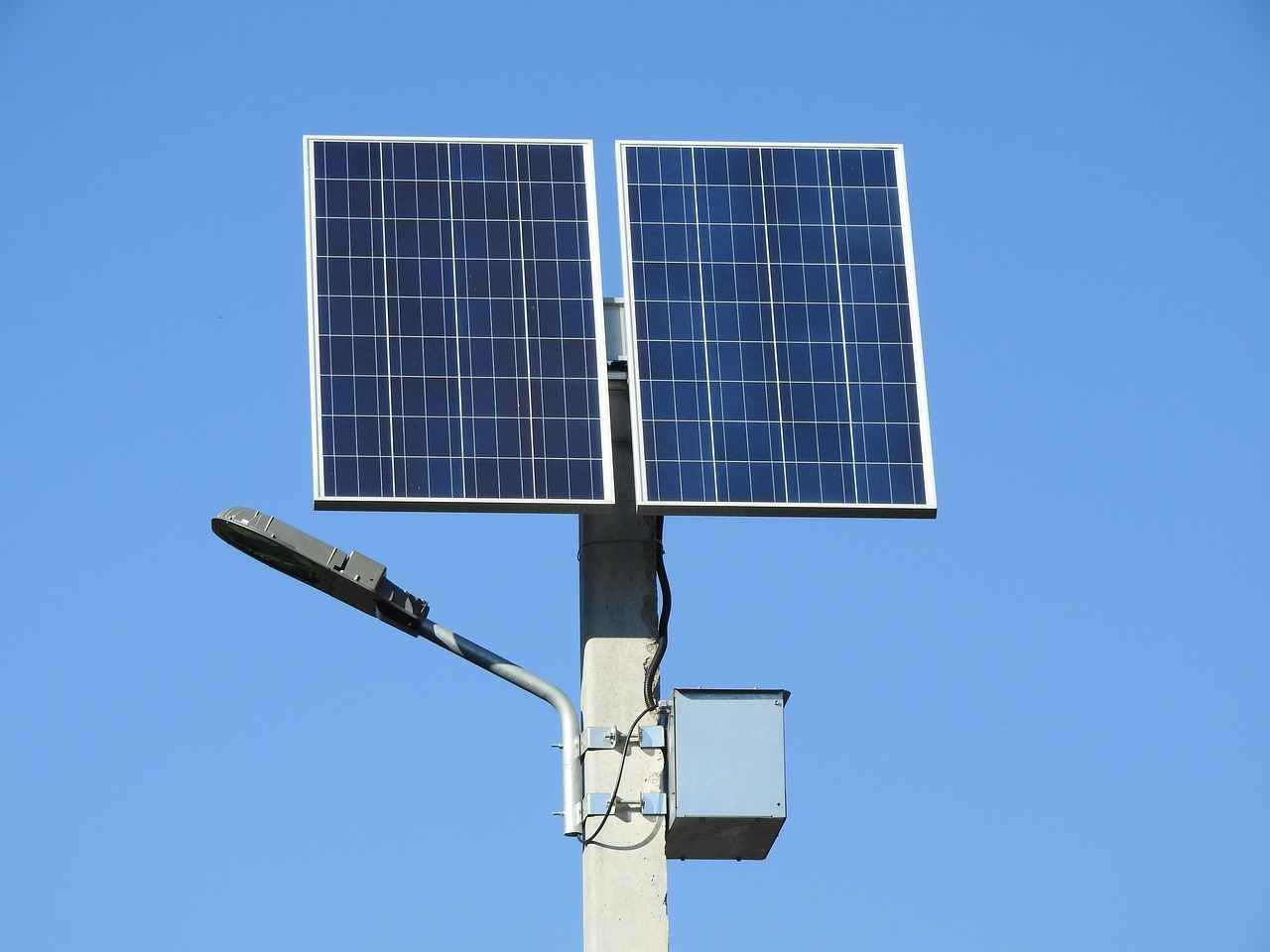
Testing Your Key Fob After Battery Replacement
When it comes to ensuring the functionality of your Honda Accord key fob after replacing the battery, testing is a critical step that should not be overlooked. This process not only confirms that the new battery is operational but also verifies that all features of the key fob are working as intended. Here’s how to effectively test your key fob after battery replacement.
After reassembling your key fob, it is essential to test it to avoid any inconvenience. A key fob that does not function correctly can lead to lockouts or difficulties accessing your vehicle. By conducting thorough tests, you can ensure that you are not left stranded or facing unexpected issues.
To ensure that your key fob is fully operational after the battery change, follow these steps:
- Check Lock and Unlock Functions: Begin by pressing the lock button on your key fob. You should hear a clicking sound from the vehicle, indicating that it has successfully locked. Next, press the unlock button to see if the doors open. If both functions work, it’s a good sign that your battery replacement was successful.
- Test the Panic Button: If your key fob is equipped with a panic button, press it to see if the car alarm activates. This feature is crucial for emergencies, and its functionality verifies that the key fob is functioning correctly.
- Remote Start Functionality: If your Honda Accord has a remote start feature, test it by pressing the corresponding button. The engine should start without any issues, confirming that all electronic components are working properly.
While testing, be aware of some common issues that may arise:
- Intermittent Functionality: If the key fob works sporadically, it may indicate improper battery placement or a defective battery. Double-check the battery orientation and ensure it is seated correctly.
- Reduced Range: If you notice that you have to be closer to the vehicle for the key fob to work, this could point to a weak battery or an issue with the fob itself.
- No Response: If the key fob does not respond at all, it may be worth re-opening the fob to check for any visible damage or misalignment.
If your key fob does not function after testing, consider the following steps:
- Recheck the Battery: Ensure that the new battery is the correct type (usually a CR2032 lithium battery) and that it is installed with the correct polarity.
- Inspect for Damage: Look for any signs of physical damage to the fob, such as cracks or broken components, which could affect performance.
- Consult a Professional: If issues persist, it may be time to consult a professional technician who can diagnose and resolve more complex problems.
In summary, testing your key fob after a battery replacement is crucial for ensuring its functionality. By following the outlined steps and being aware of common issues, you can maintain the reliability of your Honda Accord’s keyless entry system. This not only saves you time and frustration but also enhances your overall driving experience.
Check Lock and Unlock Functions
When you’ve successfully replaced the battery in your Honda Accord key fob, it’s crucial to ensure that everything is functioning correctly. One of the most effective ways to verify the success of your battery replacement is to test both the lock and unlock functions of the fob. This step is essential for confirming that the new battery is properly installed and that your key fob is fully operational.
After reassembling your key fob, start by pressing the lock button. You should hear a distinct clicking sound from your vehicle’s locks, indicating that they are engaging. If the locks respond as expected, this is a good sign that the battery replacement was successful. However, if you notice any delay or if the locks do not engage at all, it may indicate that there is an issue with the battery installation or that the battery itself is not functioning properly.
Next, test the unlock function. Press the unlock button and listen for the sound of the locks disengaging. If the doors unlock smoothly, it confirms that your key fob is working as it should. If you experience any problems, such as intermittent functionality or no response, you may need to revisit the battery installation process to ensure that the battery is seated correctly and that there are no obstructions or damage within the fob.
In addition to the basic lock and unlock functions, it’s also advisable to check any additional features your key fob may have. For instance, if your fob includes a remote start or panic button, test these functions as well. This will provide a complete check of the fob’s capabilities and ensure that all features are operational. If any of these functions fail to work, it could indicate a deeper issue that may require professional assistance.
To summarize, testing the lock and unlock functions of your Honda Accord key fob after a battery replacement is vital. It not only verifies that the battery has been replaced successfully but also ensures that all features of the fob are functioning correctly. If you encounter any issues during testing, don’t hesitate to revisit the steps you took during the battery replacement process. Proper handling and installation are key to maintaining the longevity and functionality of your key fob.
- Press the lock button: Listen for the locking sound.
- Press the unlock button: Ensure the doors unlock without delay.
- Test additional features: Check remote start and panic functions.
By following these steps, you can be confident that your key fob is ready for use, keeping you connected to your Honda Accord without any hassle.
Ensure Remote Start and Panic Functions Work
After successfully replacing the battery in your Honda Accord key fob, it is essential to test all its features to ensure everything is functioning correctly. One of the critical aspects to check is whether the remote start and panic functions are operational. These features enhance the convenience and security of your vehicle, making it important to confirm their effectiveness post-battery replacement.
Testing these functions is not just a formality; it is crucial for the following reasons:
- Security: The panic function is designed to alert others in case of an emergency. Ensuring it works can provide peace of mind.
- Convenience: The remote start feature allows you to start your vehicle from a distance, making it easier to warm up or cool down the interior before you enter.
- Functionality Assurance: Verifying that all features work confirms that the battery change was successful and that there are no underlying issues with the key fob.
To check if the remote start feature is functioning properly, follow these simple steps:
- Ensure Your Vehicle is Compatible: Not all Honda Accord models come with the remote start feature. Check your owner’s manual to confirm.
- Press the Remote Start Button: This button is usually marked with a circular arrow. Press it and observe if the vehicle starts as expected.
- Check the Engine Status: If the engine starts, the feature is functioning correctly. If not, you may need to troubleshoot further.
Testing the panic function is straightforward and can be done in just a few moments:
- Locate the Panic Button: This button is typically marked with a red triangle or the word “panic.”
- Press the Panic Button: When pressed, the car should emit a loud alarm and flash the headlights.
- Ensure Immediate Response: If the alarm activates, your panic function is working correctly. If not, further investigation may be needed.
If either the remote start or panic functions do not operate after replacing the battery, consider the following troubleshooting steps:
- Recheck Battery Placement: Ensure the new battery is installed correctly, with the positive and negative terminals aligned as indicated.
- Inspect for Damage: Look for any visible damage to the key fob that may have occurred during the battery replacement process.
- Consult a Professional: If problems persist, it may be best to consult a Honda dealership or a qualified locksmith for assistance.
By ensuring that both the remote start and panic functions are operational, you can rest assured that your key fob is fully functional and ready for use. Regular testing of these features is a good practice to maintain the reliability of your vehicle’s access system.
Frequently Asked Questions
- How often should I change my Honda Accord key fob battery?
It’s generally recommended to change your key fob battery every 2 to 3 years, but if you notice reduced range or inconsistent functionality, it might be time for a replacement sooner.
- Can I use any battery for my Honda Accord key fob?
No, it’s important to use the correct battery type, which is typically a CR2032 lithium battery for most Honda Accord key fobs. Using the wrong battery can lead to malfunction.
- What should I do if my key fob still doesn’t work after replacing the battery?
If your key fob isn’t working after a battery change, double-check the battery placement for correct polarity. If it still doesn’t function, there may be a deeper issue with the fob itself.
- Is it safe to open my key fob myself?
Yes, it’s generally safe to open your key fob as long as you follow the proper steps. Just be gentle and use the right tools to avoid damaging the casing or internal components.
- Can I get my key fob repaired if it’s broken?
Yes, many dealerships and locksmiths can repair or replace broken key fobs. However, it might be more cost-effective to replace it entirely depending on the damage.
